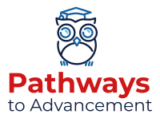The job market is hugely competitive. When recruiters advertise a position, they could be faced with hundreds of applications that they’ll need to go through. So, your resume must make an impact to get you noticed. A career resume will also be referred to throughout the recruitment process, so it must stand up to scrutiny as well. You start to consider looking to improve your resume even before you begin looking for a new job. Our resume tips can help you do just that.
Condensing your career into a few short pages can be tricky, though, and singing your own praises does not come naturally to everyone. A resume must be a brief but persuasive sales document if you are going to stand a chance of landing that job.
What Are The Necessary Parts Of A Resume?
Before we mention some resume tips that could significantly improve your resume, we want to briefly mention the necessary basic parts that each resume should include.
A resume should always include important contact information, such as your full name, address, and phone number. Additionally, the resume should list relevant work experiences, educational background, special projects or achievements, and any awards you may have received. Lastly, it’s essential to showcase soft skills like communication and problem-solving that employers find valuable.
A well-crafted resume is key to presenting your accomplishments and qualifications in an attractive manner to ensure you get the job.
So, if you are about to embark on a job hunt, it’s time to dig out your old resume, bring it up to date, and give it a bit of a polish. Here are ten resume tips to help you make your resume stand out from the rest.
1. Make a Positive First Impression
Put yourself in the shoes of the recruiter. What would you do if you were looking at a massive pile of resumes that needed your attention? You’d probably start by carrying out a swift cull of all the unsuitable applications to get that mound of resumes down to a manageable size. So, if you want your resume to stay in the “possible” pile, you must make a great first impression. And the way to grab a recruiter’s attention is to have an eye-catching headline and opening summary section. The opening headline of your resume should describe you as the perfect fit for the job. The opening summary section should briefly expand on your experience and qualifications. The first few lines of your resume are the hook that will make a recruiter want to learn more about you.
2. Review Sample Resumes
Looking at some examples of typical resumes for the relevant industry may give you some inspiration. Search on google, and you will get an idea of what other people include in their applications for the type of job you are hoping to land. Looking at examples will give you an idea of the level of detail people usually have in their resumes, the document layout, and the skills and attributes that people highlight. However, it would be unwise to follow an example too closely, because someone else may have done the same.

3. Keep It Relevant
Recruiters do not spend a great deal of time on each resume. So, you must get the crucial points across fast. Try to include only the information pertinent to the post for which you are applying, and make sure that the most relevant information is at the top of each section of your resume. Jobs that you had ten years ago, for example, will not usually need to be described in detail, especially if you had a career change. If you want to demonstrate a continuity of employment, only summarize briefly the non-relevant positions that you have held.
4. Highlight Achievements
Focus on achievements rather than responsibilities. If you were responsible for delivering work to a deadline, for example, that is merely a duty. However, if you reduced the turnaround on delivery of that work by 50%, that is an achievement. Action words such as reduced, completed, improved, and delivered, are powerful words that suggest achievement. Numbers make it easy for a recruiter to quantify the magnitude of your accomplishments.
5. Remove Unnecessary Verbiage
A resume must be grammatically correct, but it doesn’t need to be a literary masterpiece. So, be brief and to the point, and remove unnecessary words from the text. For example, you might have a paragraph that reads, “As a departmental manager at XYZ Inc, I was responsible for training and managing a team of eight people.” However, including the company name and job title would be unnecessary because it would be part of the subheading. The important information in this paragraph is that you have team management experience and skills. So, the same information could be conveyed in a far more powerful way by using the shortened phrase, “Led a team of 8.”
6. Use Keywords to Optimize Your Resume
Keywords in resumes are crucial because recruiters are likely to skim-read your resume when first shortlisting. Keywords can also be used to reinforce your suitability for the role. So, before you set about updating your resume, read through the description of the job you are applying for and note down how the prerequisite skills, experience, and qualifications are described. Then, use those same keywords to describe your skills, experience, and qualifications where you can. For example, if the job specification uses the term client-centric, then that is a keyword that you want to try to get into your resume.

7. Customize Each Job Application
As you will see from the above points, it is best to customize your resume for each job application. You can use the same basic framework each time. Still, different aspects of your experience and skills will need to be emphasized for each application. When an employer advertises an open role, they are looking to solve a problem. Your resume needs to show how you can solve that problem for the employer. Customizing your resume shows that you are a good match for the company. It also demonstrates that you understand the requirements of the role.
8. Pay Attention to Formatting
How you format your resume will play a part in how easy it is read. Understanding what type of resume formatting to use can go a long way. Use a professional-looking font, like Ariel or Times New Roman, and use a standard easy-to-read font size between 10 and 12 points. Use subheadings to make the document easy to navigate, but if you have used a resume template, be sure to remove any unnecessary sections. It’s best not to go overboard with your creativity unless you are applying for a creative job like graphic design or any other type of digital design job. For most roles, it is best to stick to a formal, business-like format for your resume.
9. Proofread Every Version
The danger with making last-minute changes in an attempt to improve your resume is that you allow typos or spelling mistakes to slip through the net. So, it would be best to proofread every version of your resume several times before sending it out. It’s also a good idea to run your resume through a grammar checker like Grammarly, which is a free tool you can use. You might also want to run your completed resume by a trusted friend or colleague. One small error in your resume could make all the difference, especially when applying for a job that requires attention to detail. Proofreading and making necessary changes can greatly improve your resume.
10. Sell Yourself!
The purpose of a resume is to get you to the next stage of the recruitment process. So, it would be best if you sold yourself to your potential employer. Look at every line on your resume and consider what it says about your suitability for the role. And don’t be bashful about your accomplishments. Your resume is like an advertising flyer that you might get in the paper–the purpose of a flyer is to grab attention and convince people to find out more or make a purchase. In much the same way, your resume must convince a recruiter that you might be the right person for the job and make the employer want to learn more about you.

Resume Tip #11: Continuously Update Your Resume
Sometimes people don’t dust off their resume until they actually need to start looking for a job. This can lead to forgetting to include important skills, experiences, or outcomes. Continuously updating your resume while currently employed can help you track any relevant information for future job hunting. Whether you took the time to update your skills by completing an online course or you contributed to significant revenue growth in your company, updating your resume in real time will decrease the chances of you leaving out that information completely. So take the time to update your resume as you achieve significant milestones or accomplishments in your professional career.
- Tailor your resume to the specific job and company you’re applying to.
- Use a clear and professional format.
- Use action verbs to describe your responsibilities and accomplishments.
- Highlight your most relevant and impressive experiences and skills.
- Use keywords from the job listing to ensure your resume is easily searchable.
- Include quantifiable data, such as numbers and statistics, to show the impact of your work.
- Use bullet points to make your resume easy to read.
- Limit your resume to 1-2 pages.
- Use a professional-sounding email address.
- Make sure there are no spelling or grammar errors on your resume.
- Include relevant education and training.
- Use consistent formatting, such as the same font and font size throughout the resume.
- Include a personal statement or summary that highlights your qualifications.
- Use strong action verbs, such as “managed,” “created,” or “implemented,” to describe your responsibilities.
- Include a list of technical skills that are relevant to the position such as coding languages, web development experience, etc.
- Highlight any relevant certifications or awards.
- Use metrics to demonstrate your impact on previous roles.
- Be specific about your accomplishments and how you achieved them
- Add a section for volunteer or extracurricular experiences if it adds value to your resume
- Incorporate industry-specific keywords that demonstrate your knowledge of the field
- Add any second language you understand both verbally and written. This is especially important to include if you’re applying to a global company that has offices in countries outside of the United States.
- Showcase any experience you have in a leadership role
- Use a professional resume template to make your resume look polished
- Include links to your online presence, such as LinkedIn or a professional website, if you have one
- Showcase any experience you have working remotely
- Add any experience you have with specific software or technologies if relevant to the position
- Include any publications you have written, if relevant to the position
- Highlight any training or professional development you have received
- Include any presentation or public speaking experiences you have
- Showcase any experience you have working in cross-functional teams
- Include any experience you have with budgeting or financial analysis
- Mention any industry or field-specific certifications you hold
- Highlight any experience you have with data analysis or data-driven decision making
- Include any experience you have with project management
- Include any experience you have with customer service or client management. This is helpful for most positions even if your primary responsibilities don’t include client interaction
- Showcase any experience you have with digital marketing or social media management, if relevant to the job your applying for
- Include any experience you have with product development or product management
- Highlight any experience you have with process improvement or process optimization
- Showcase any experience you have with team management or team building
- Highlight any experience you have with research or market analysis
It’s also important to note that a resume serves as a summary of your qualifications and it’s not the only thing that recruiters and hiring managers consider during the hiring process. To make the best impression, you should also tailor your cover letter to the job and company, and be prepared for interviews by researching the company and practicing answering common interview questions.
Key Takeaways to Improve Your Resume
Your resume is the first indication an employer will have of what you can bring to a role. If your resume lets you down, you may not get a second chance to impress. So, highlight your skills and accomplishments, but keep the resume relevant and concise. Taking time to improve your resume and making it perfect will help you get more interviews and make it easier to land the job you are after.



